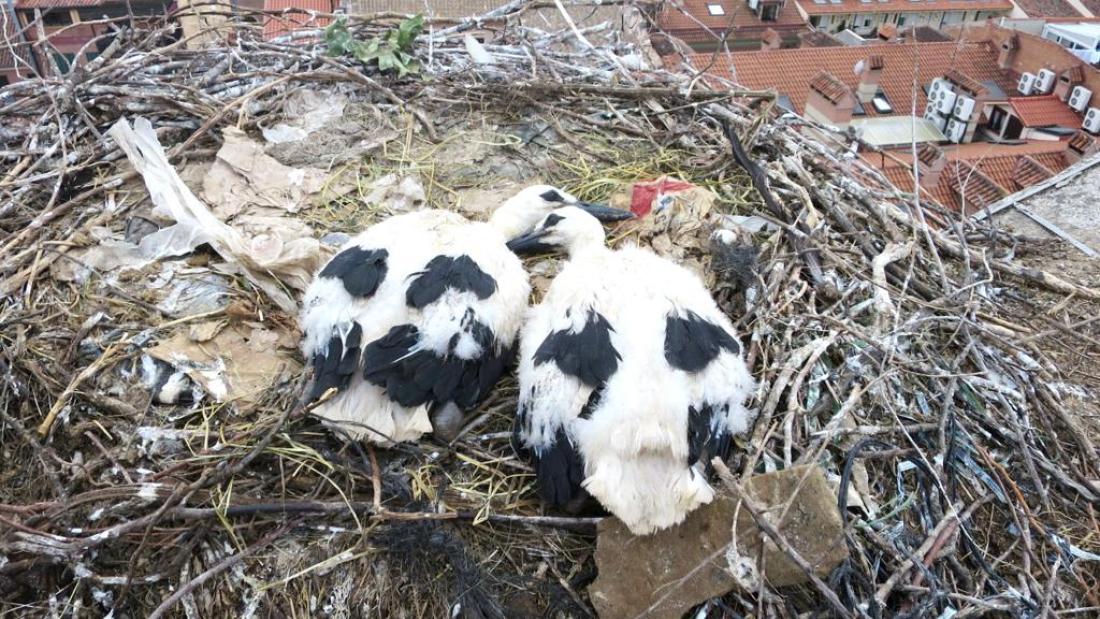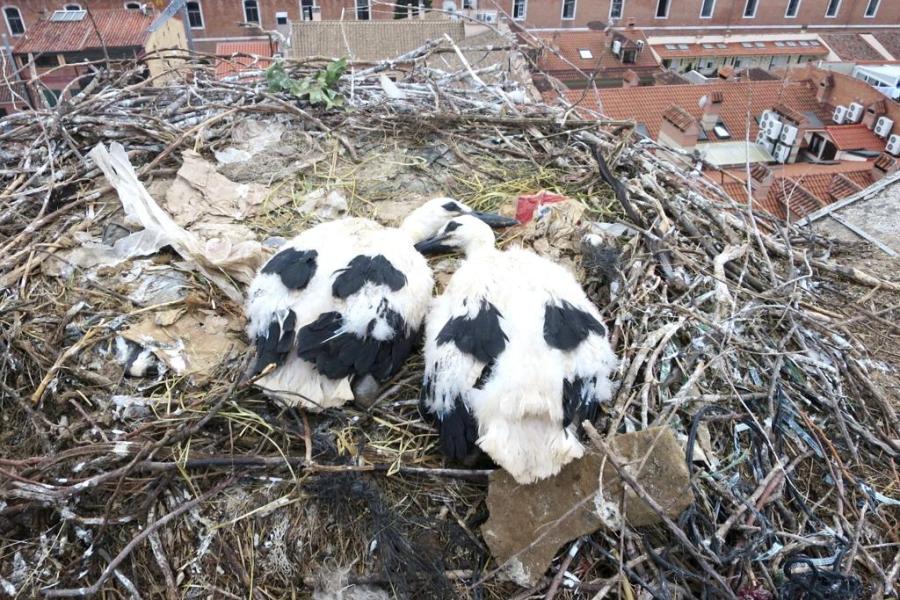The special issue highlights that the nests of a wide range of taxa – from birds to mammals to fish to reptiles – allow them to adapt to human-induced pressures. Those pressures range from the inclusion of anthropogenic materials into their nests through to providing parents and offspring with a place to protect themselves from increasingly hot temperatures in a changing climate.
Plastic in White stork nests
Birds use our discarded materials in their nests
Anthropogenic materials sometimes harm birds. Parents and offspring sometimes become fatally entangled in baler twine. Meanwhile, offspring sometimes ingest anthropogenic material after mistaking it for natural prey items. Finally, the inclusion of colourful anthropogenic materials into nests attracts predators to those nests who then prey upon the eggs or nestlings. This means that we need to reduce the amount of plastic and other anthropogenic material that we discard.
The lead author of the study, Zuzanna Jagiełło who is based at the Poznań University of Life Sciences in Poland, added,
“A wide variety of bird species included anthropogenic materials into their nests. This is worrying because it is becoming increasingly apparent that such materials can harm nestlings and even adult birds”.
Zuzanna Jagiełło also went on to say that “more studies are needed to gain a more complete understanding of how many bird species worldwide include such materials into their nests for us to fully comprehend the extent of the problem.”
The second author of the study, Jim Reynolds, a researcher in the Centre for Ornithology at the University of Birmingham in the UK, remarked,
“In a rapidly urbanizing world which we share with many different animal taxa, it is not surprising that birds use our discarded materials in their nests. Although much needs to be understood about how plastics, for example, impact birds, it is exciting that birds, through their high mobility and breeding biology, may prove to be potent biomonitors of environmental anthropogenic material pollution.”






